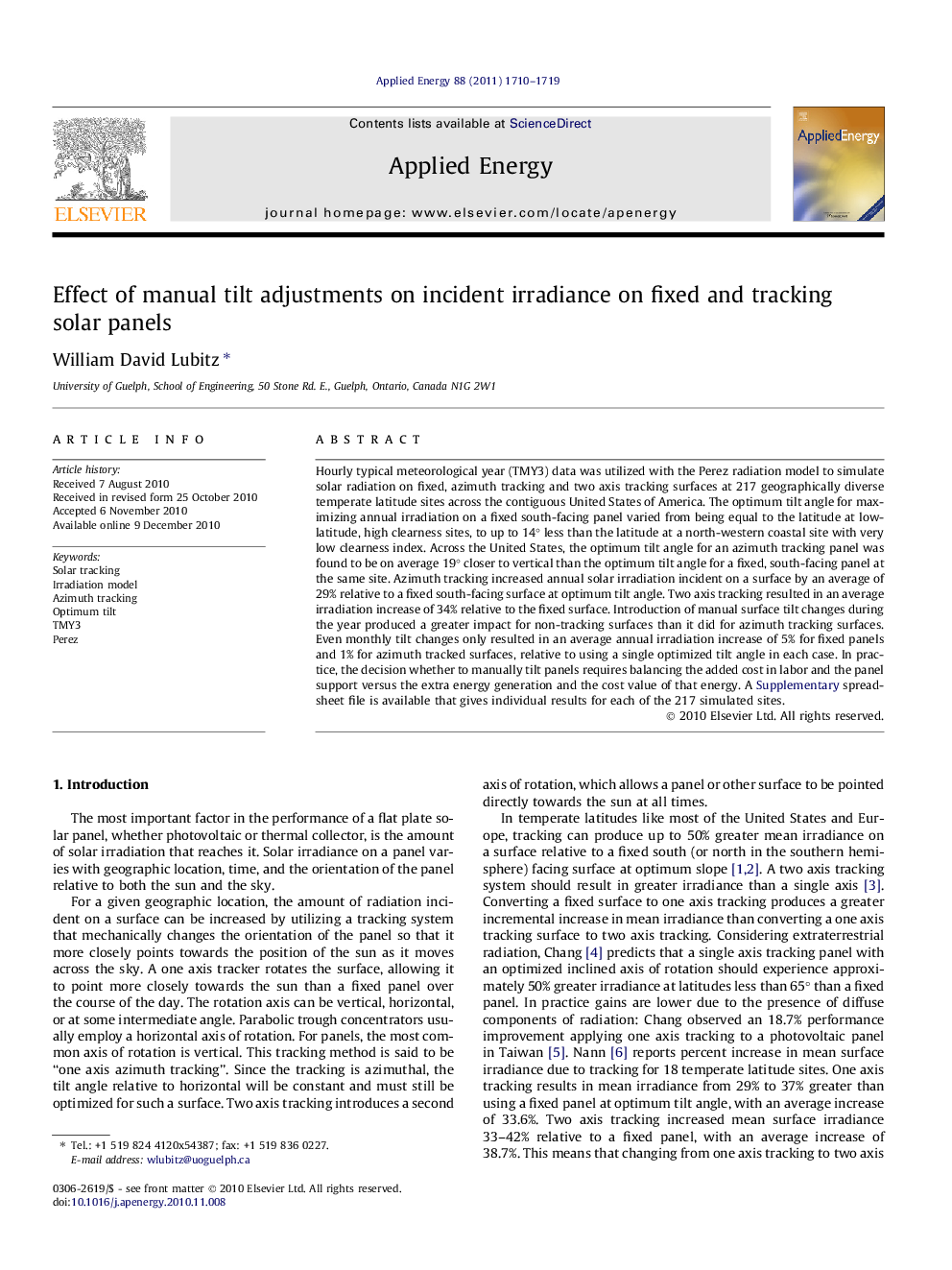| Article ID | Journal | Published Year | Pages | File Type |
|---|---|---|---|---|
| 243864 | Applied Energy | 2011 | 10 Pages |
Hourly typical meteorological year (TMY3) data was utilized with the Perez radiation model to simulate solar radiation on fixed, azimuth tracking and two axis tracking surfaces at 217 geographically diverse temperate latitude sites across the contiguous United States of America. The optimum tilt angle for maximizing annual irradiation on a fixed south-facing panel varied from being equal to the latitude at low-latitude, high clearness sites, to up to 14° less than the latitude at a north-western coastal site with very low clearness index. Across the United States, the optimum tilt angle for an azimuth tracking panel was found to be on average 19° closer to vertical than the optimum tilt angle for a fixed, south-facing panel at the same site. Azimuth tracking increased annual solar irradiation incident on a surface by an average of 29% relative to a fixed south-facing surface at optimum tilt angle. Two axis tracking resulted in an average irradiation increase of 34% relative to the fixed surface. Introduction of manual surface tilt changes during the year produced a greater impact for non-tracking surfaces than it did for azimuth tracking surfaces. Even monthly tilt changes only resulted in an average annual irradiation increase of 5% for fixed panels and 1% for azimuth tracked surfaces, relative to using a single optimized tilt angle in each case. In practice, the decision whether to manually tilt panels requires balancing the added cost in labor and the panel support versus the extra energy generation and the cost value of that energy. A Supplementary spreadsheet file is available that gives individual results for each of the 217 simulated sites.
